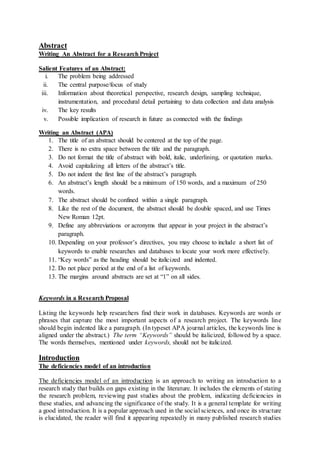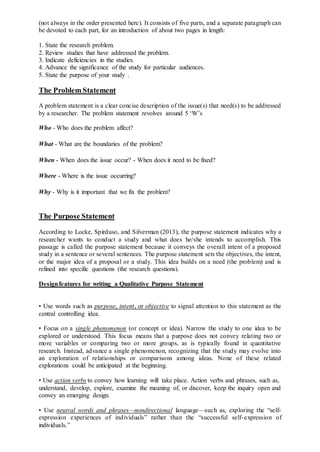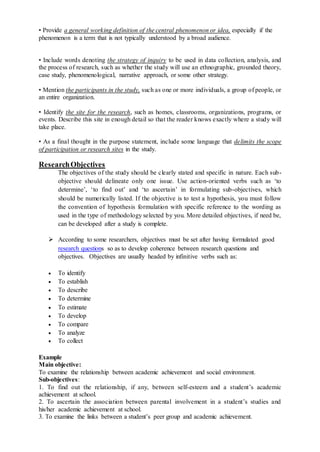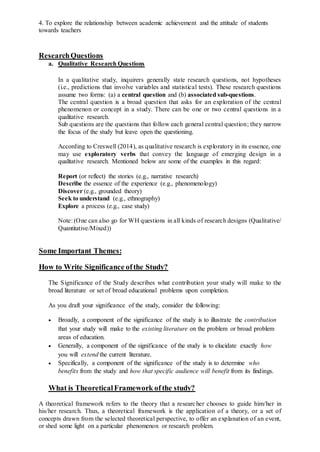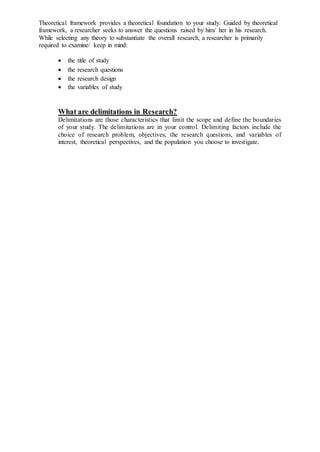This document provides guidance on key elements of a research proposal or project, including an abstract, introduction, problem statement, research questions and objectives, theoretical framework, methodology, and significance. It discusses how to write each section, such as including the problem being addressed, purpose, and methodology in the abstract. For the introduction, it recommends a deficiencies model that states the problem, reviews previous studies and their deficiencies, and advances the study's significance. It also provides examples of formulating research questions, objectives, and defining the scope of the study through delimitations. The document serves as a reference for crafting the essential components of a research plan or proposal.
![RESEARCH ARTICLE
TABLE OF CONTENTS
Abstract ………………………………………………………..
Key Terms………………………………………………………
Introduction……………………………………………………..
Problem Statement…………….. …………………………………..
Research Questions……………… ………………………………..
Research Objectives...…………….. ……………………………..
Significance of the Study…………………………………………...
Literature Review………………………………………………….
Critical Framework and Methodology …………………………….
1. Approach to Inquiry /Research Design [(i.e. Qualitative/ Quantitative or Mixed
Method Research), including an account of specific method to be employed within
the framework of a research design]
2. Theoretical Framework…………………………………………..
3. Procedural detail for conducting the study (A detailed account of the way
whereby data has been collected and thereby analyzed)
Data Analysis
Delimitations of the study ………………………………………………………..
References](https://image.slidesharecdn.com/newresearcharticleformat-160717171024/85/New-research-article-format-1-320.jpg)
